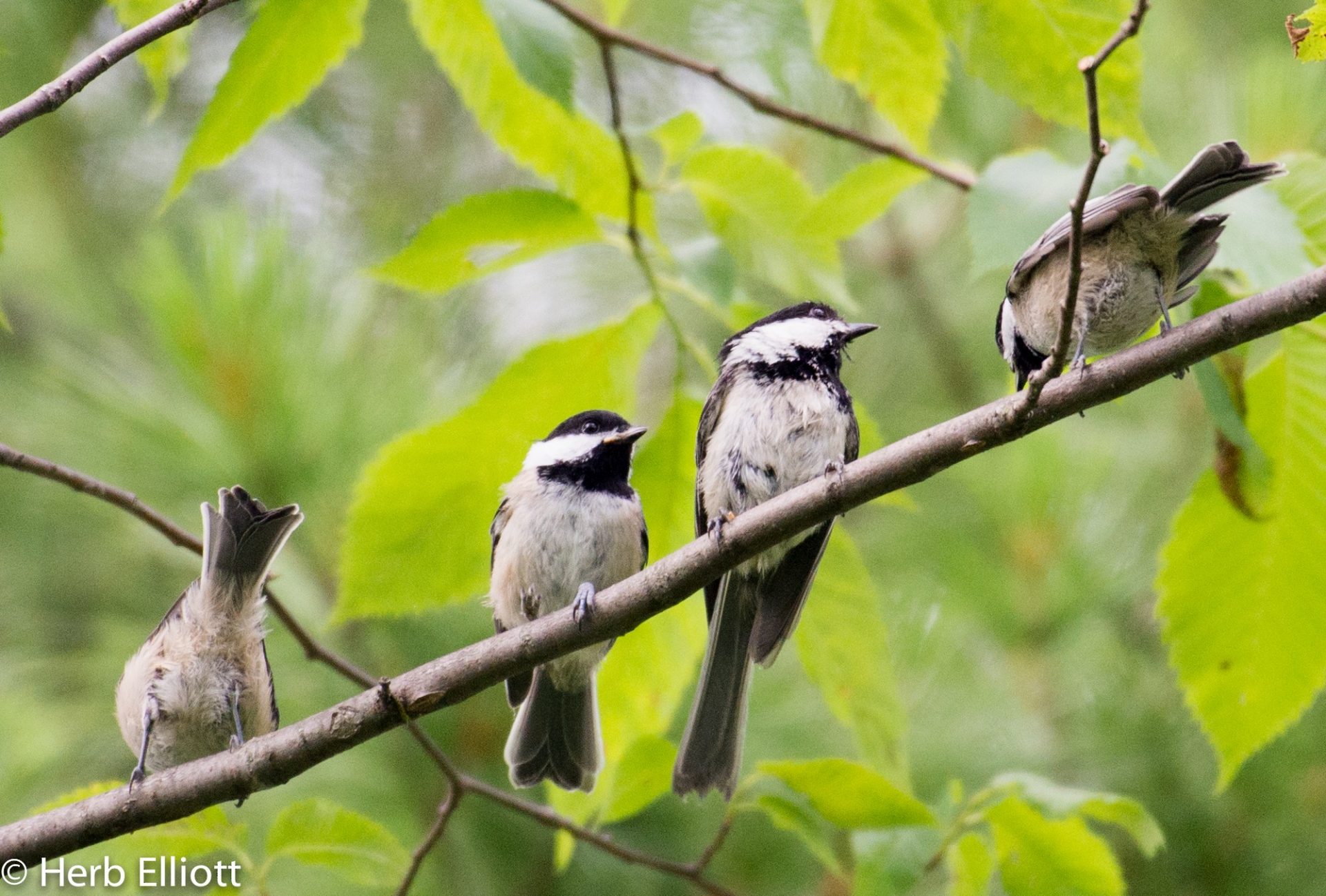 Photo ©
Herb Elliot via Macaulay Library
Photo ©
Herb Elliot via Macaulay Library
Living in a flock has many benefits for birds, especially during the winter. As a group, they can find food more easily, huddle together to keep warm, and more eyes can spot predators faster. The Black-capped Chickadee is one of the small birds in the northern part of the United States that may be found in flocks.
Each flock has its own rules, which are reinforced with pecks – a bird’s way of saying “back off.” The majority of flocks follow one of two systems: the peck-right and the peck-dominance. Imagine a staircase where a bird is on every step based on their rank. Each bird can peck any of the birds on the steps below it, but not the ones on the steps above it. This is the peck-right system.
The Black-capped Chickadees, though, prefer the peck-dominance system. This system allows everyone to peck each other. However, the frequency of the pecks depends on the bird’s rank. Dominant birds are pecked less and can peck more, while the lower ranking birds are pecked more and can peck less. But how do they know their ranks? Well, ranks are demonstrated through song and plumage. Researchers have found that Black-capped Chickadees are able to infer ranks of new or visiting males based on their songs, and properly integrate them into the flock.
Not all chickadees remain with the same flock. Some are “winter floaters,” meaning they do not belong to a single flock and join different ones when it is convenient for them. These floaters have different ranks within each of the flocks where they spend their time.
You can see this system at work when the flock is feeding. Dominant birds eat first. On the trees nearby, the less dominant ones will be waiting for their turn. So, next time, when you see a flock of chickadees hanging around your bird feeder, pay close attention to the interesting dynamics of the flock!
Article by Michelle Santillán